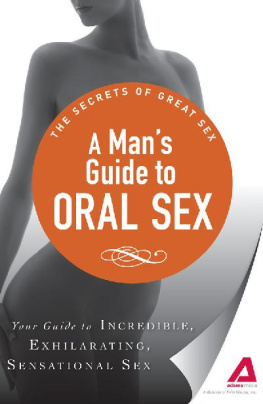FOREWORD
Theres no question about it.
Mindfulness is fast becoming one of the most-researched and most-talked-about phenomena today. Learning how to intentionally engage with the now is no longer considered a dubious pathway to an abstract enlightenment. Instead, it is backed by rigorous science as a practical way to open your mind to choices and possibilities that you may have never thought existed.
In the pages that follow, youll begin a journey to discover that you can become naturally flexible in your decision making, regulate your body in moments of distress, calm your anxious mind when its snowballing with thoughts, have greater focus at home and work, feel empathy and compassion toward yourself and others, communicate more effectively, and be more aware of what is most important to you.
Millions of people, including professionals in mental health, medicine, education, business, sports, and even politics have begun integrating mindfulness into our culture. Google, one of the most successful companies in the world, offers a program to help its employees hone their ability to be more present. Many health-care companies are instituting courses in engaging with the now for their employees and corporate clients. A growing number of elementary, middle, and high schools are teaching their children mindfulness practices. Mindfulness is currently being used to help our military and its veterans. Amid the chaos of Capitol Hill, Congressman Tim Ryan of Ohio has created some reprieve with Quiet Time Caucus, where members go to get quiet. In sports, Phil Jackson, arguably the most successful NBA coach of all time, always encouraged his players to practice mindful basketball, and the Seattle Seahawks, recent NFL champions, had a steady mindfulness practice. You can find mindfulness classes in thousands of recovery programs, mental health centers, and hospitals around the globe. The list goes on and on.
Why is this mindful revolution happening?
Many people point to a natural need to balance the overwhelming pressures we are experiencing in this day and age. Other people point to the explosion of neuroscience over the past decade, showing that we can use our minds to change our brains. This is incredibly empowering. The practical benefits that millions of people have experienced with mindfulness are hitting a tipping point. In all the years that Ive been practicing mindfulness, it has become very clear to me that mindfulness is the essential thread that keeps me grounded, clear, and able to focus on what really matters in my life. Its as if, over time, I have trained my brain to know when Im imbalanced and to draw upon natural ways to rebalance. This has been instrumental in helping with my stress, my relationships, and my life. Dont get me wrongthis doesnt mean I dont get stressed, or angry, or imbalanced. It just means I recognize it sooner and am able to recalibrate with greater perspective.
Along the way Ive learned four tips that have become integral to the way I practice, and I hope they will support you as you get started.
Its simple, but not easy. Ive learned that while the teaching of mindfulness can be simple, its not always so easy to practice. As we attempt to weave it in, our mind pops up to say that were too busy, skeptical, or just unmotivated. Dont be alarmed: these are the minds avoidance strategies. Just note them and come back to the practice.
Your practice is not a performance. Each practice doesnt need to be evaluated as a good meditation or a bad meditation. This performance-based mind-set misses the point entirely. If there is any goal at all to these practices its simply to learn. Bringing a learning mind-set is the fastest route to growth and mastery.
Youll be imperfect at thislike the rest of usand thats okay. If time goes by and you forget to practice, just forgive and invite. Forgive yourself for the time gone by, investigate what took you off course, learn from it, and then in that space of awareness, invite yourself to begin again.
Acknowledging your effort matters. Remember, you are an active participant in your health and well-being. Every time you choose to engage in mindfulness it is with the intention of loving yourself. Perhaps the most important thing you can do is acknowledge yourself for making the effort to take time out of the daily hustle for your own learning, health, and well-being.
Now its time to take a breath and get started.
I wish you all the best as you begin this playful adventure into your life.
Elisha Goldstein, PhD
Santa Monica, Calif.
INTRODUCTION
Often called paying attention on purpose, the practice of mindfulness guides us to focus on the present moment with nonjudgmental awareness. Mindfulness Made Simple offers an accessible way to bring this modern practice with ancient roots into your daily life. The basic elements of mindfulness practicethe body, the breath, and the mindwork together to help us shift from living life on autopilot to living in the moment. Practicing mindfulness can help resolve many concerns that distress us, including pain, anxiety, stress, insomnia, and other challenges of modern life.
Based on the latest wisdom in the field of mindfulness practice, this essential handbook introduces the theory and historical underpinnings of mindfulness and offers inspiring yet practical guidance for:
- Beginning your own mindfulness practice
- Applying mindfulness to particular concerns
- Incorporating mindfulness into your everyday life
- Deepening your mindfulness practice
- Investigating resources for further information
Mindfulness Made Simple is structured so that you can use it in the way that works best for you. Follow the book from beginning to end, learning some background about mindfulness and advancing step by step in the practice of mindfulness meditation, or simply start with basic meditations and then proceed to more advanced practices. You may decide to select meditations that are tailored to address particular issues that concern you. Or you can focus on the ways in which mindfulness can be brought into your everyday life. You decide what works for you.
Throughout the book, you will find exercises, tips, and journal prompts to help guide and facilitate your mindfulness practice:
- Exercises are specific, step-by-step procedures for practicing mindfulness. Much like physical exercise, the more you practice, the more these habits will feel natural and become part of your life.
- Tips will help you understand what to expect as you proceed in your mindfulness practice. Much like a human guide, they will help resolve some concerns you might have, address obstacles you are experiencing, and suggest ways to make your practice more useful.
- Journal prompts provide thoughts or ideas to consider as you progress in your mindfulness practice. If you decide to keep a journal of your mindfulness journey, prompts can help focus your thoughts as you begin to write about your feelings and accomplishments.
You will also find a comprehensive list of resourcesfrom in-person instruction to audio meditations and moreto help you deepen your mindfulness practice. These are listed in the of the book; feel free to consult them at any point in your practice.
To reference a well-known piece of ancient wisdom, you can begin your journey with a single step: commit to learning about the practice of mindfulness. Discovering how to be continuously present with each and every one of your experiences will enhance, and may even change, your life. Within this bookand, more important, within yourselfyoull find everything you need to get started.
PART ONE
Understanding
Mindfulness

Next page












